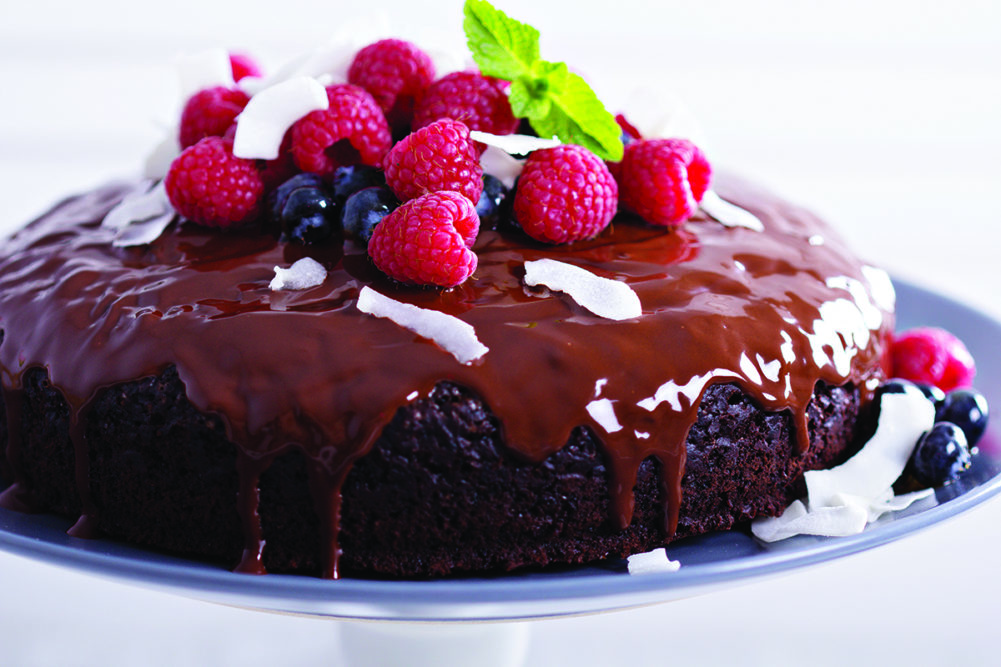Anthea Cheng has only been a vegan for 7 years, but in that time has accomplished quite a lot. The chef, food photographer, food stylist and recipe developer based in Canberra, Australia has used her expertise to help others with the not-so-simple task of creating delicious and health-focused vegan treats.
At the beginning, Cheng owned a vegan cake business. She made bespoke cakes to help customers celebrate their birthdays, weddings and celebrations, often making hundreds of cakes each week for popular cafes around Canberra. In 2019, Cheng closed her cake business focus on her true love – making recipes accessible to everyone.
In her 2019 cookbook, Incredible Plant-Based Desserts, Cheng shared her trade-secret recipes for showstopping vegan sweet treats to delight everyone, from healthy eaters pursuing a plant-based diet to those who simply appreciate a beautifully crafted dessert. Additionally, she runs a successful blog called Rainbow Nourishments, in which she shares wholesome vegan recipes with a twist.
Cheng continues to share her expertise both online and in-person in a variety of ways, including through social media and hosting workshops and pop-up events internationally. She was also recently a part of The Bake Fest, a virtual event full of live interactive sessions that hosted thousands of bakers from all around the world.
One of the key challenges she discusses with bakers interested in vegan baking is finding the right ingredients to satisfy dietary requirements without sacrificing taste. Traditional butter is easy to substitute these days, with many companies providing useful options. Milk is another vital aspect of cake baking, and Cheng prefers soy milk to other varieties. She says it is the richest, has a high amount of protein and simply tastes better than alternatives.
Many cakes do not need an egg substitute, but when called for, Cheng tries to find a binding agent that isn’t too dense such as applesauce. Chia or flax seeds combined with water and baking powder can accomplish the same thing, and while a bit earthy in taste, won’t overwhelm the cake.
Another egg substitute that is growing in popularity is aquafaba. Highly touted for its ability to mimic the characteristics of egg whites, the viscous liquid left over after draining a can of chickpeas allows for endless possibilities in baking, especially with cakes.
While possible to convert regular recipes to vegan, many won’t cross over. Cheng recommends following vegan recipes when starting out. Vegan bakers have provided a treasure trove of resources for those on that journey. Among Cheng’s popular recipes is her chocolate, peanut butter and jam cake. Says Cheng, “This epic yet rustic cake has a fluffy vegan chocolate sponge, 5 ingredient peanut butter cookies, the most glorious buttercream (which isn’t too sweet) and dollops of jam.”
Cheng uses an Australian ingredient company, McKenzie’s Foods, for her flour. She says that the innovative flour range makes quality baking easy, the low-protein cake flour allows her to make soft cakes and the cookie blend (using oat and chickpea flour) helps her make one-bowl healthy cookies.
Aquafaba basics
No eggs, no problem. For a long time, there wasn’t an ideal substitute for egg whites in vegan baking, but that has changed as innovative chefs experimented with various ingredients. One of the highest recommended substitutes is aquafaba, the viscous liquid left over when you drain a can of chickpeas. It acts almost like egg whites when used in baking, including being whipped into meringue.
King Arthur Baking Company suggests using the aquafaba from canned chickpeas, rather than saving the liquid from chickpeas you’ve cooked yourself, in order to be more exact with your baking. After draining aquafaba, you can also freeze the liquid in an ice tray, then save the frozen chunks in a plastic bag to thaw and use whenever you need.
2 tablespoons of aquafaba are equivalent to about 1 egg white. You can whip it up the same way you would egg whites, either with sugar or without. This is especially good for meringue. The process can take longer than with egg whites. It’s also important to make sure your aquafaba is about the same viscosity as egg whites after they've been lightly whisked, perhaps slightly thinner. Cream of tartar works well as a stabilizing ingredient that improves the structure of the whipped aquafaba.
Also, make sure to incorporate flavorings like vanilla or almond extract to offset the taste of beans that comes with using aquafaba.
Keep up with the latest retail bakery news.

